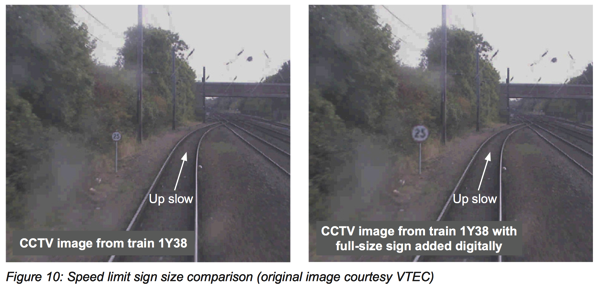Monday Accident & Lessons Learned: Overspeed at Fletton Junction

This incident notice is from the UK Rail Investigation Branch about an overspeed incident at Fletton Junction, Peterborough on 11 September 2015.
At around 17:11 hrs on 11 September 2015, the 14:25 hrs Virgin Trains East Coast passenger train service from Newcastle to London King’s Cross passed through Fletton Junction, near Peterborough at 51 mph (82 km/h) around twice the permitted speed of 25 mph (40 km/h). This caused the carriages to lurch sideways resulting in minor injuries to three members of staff and one passenger.
It is likely that the train driver had forgotten about the presence of the speed restriction because he was distracted and fatigued due to issues related to his family. Lineside signs and in-cab warnings may have contributed to him not responding appropriately as he approached the speed restriction and engineering controls did not prevent the overspeeding. Neither Virgin Trains East Coast, nor the driver, had realised that family-related distraction and fatigue were likely to be affecting the safety of his driving. Virgin Trains East Coast route risk assessment had not recognised the overspeeding risks particular to Fletton Junction and Network Rail had not identified that a speed limit sign at the start of the speed restriction was smaller than required by its standards.

The incident could have had more serious consequences if the train had derailed or overturned. The risk of this was present because the track layout was designed for a maximum speed of 27 mph (43 km/h).
As a consequence of this investigation, RAIB has made five recommendations. Two addressed to Virgin Trains East Coast relate to enhancing the management of safety critical staff with problems related to their home life, and considering such issues during the investigation of unsafe events.
A recommendation addressed to Virgin Trains East Coast and an associated recommendation addressed to Network Rail relate to assessing and mitigating risks at speed restrictions.
A further recommendation to Network Rail relates to replacement of operational signage when this is non-compliant with relevant standards.
RAIB report also includes learning points relating to managing personal problems that could affect the safety performance of drivers. A further learning point, arising because of a delay in reporting the incident, stresses the importance of drivers promptly reporting incidents which could have caused track damage. A final learning point encourages a full understanding of the effectiveness of safety mitigation provided by infrastructure and signalling equipment.
For more information see:



